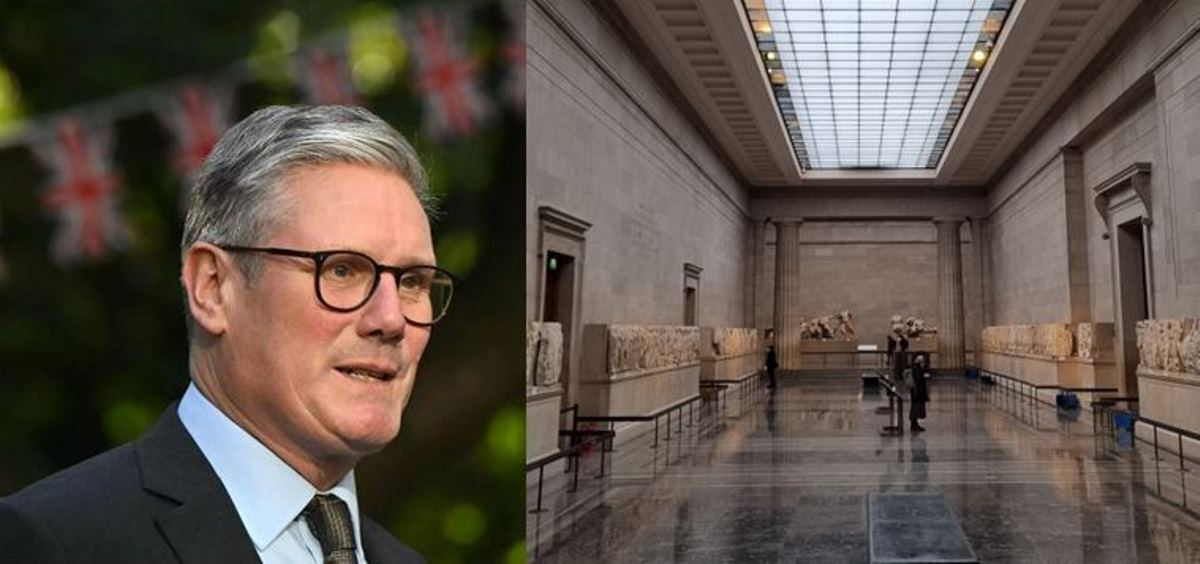01 December 2012
According to the British Museum web site, there have been assumtions about the use of colour on the Parthenon Sculptures.....
"Sculptures from the Parthenon have been on display in the British Museum for almost 200 years, and have been intensively studied and investigated throughout that time (1, 2). It has often been assumed that they, like other Classical objects in the Museum, were once painted with colour, but until recently no firm evidence had ever been found."
Tom Flynn points out:
For generations it has been common knowledge among art historians and archaeologists that the Parthenon and its sculptures would originally have been decorated. Lawrence Alma-Tadema's painting of 1868 — Pheidias and the Parthenon Frieze— depicts the sculptor showing Athenian citizens around his team's handiwork high up on the scaffold.
By the mid-nineteenth century, a lively debate was raging in British scholarly circles over the question of polychromy, the colouring of sculpture..
Today, even virtual reality reconstructions of the Parthenon use nineteenth-century sources such as Benoit Loviot's Cross-Section of the Parthenon of 1879-81 (Ecole des Beaux-Arts Paris) as their guide to the use of colour on the Parthenon. These late nineteenth-century sources were themselves drawing on much earlier research by architects such as Jacques-Ignace Hittorff (1792-1867) and Quatremère de Quincy (1755-1849) which had established beyond doubt that Greek temples and sculptures were coloured, both with 'applied' polychromy (paint) and 'natural' polychromy (the use of naturally coloured materials such as gold and ivory).
http://tom-flynn.blogspot.com/
Press Release issued by BCRPM on 26 June 2009
British Museum 'huge breakthrough', a propaganda stunt according to the British Committee for the Reunification of the Parthenon Marbles
The announcement of a "huge breakthrough" by the British Museum, with the discovery of blue paint on some figures from the Parthenon Marbles, looks uncommonly like a propaganda stunt, timed to divert attention from the opening of the New Acropolis Museum in Athens.
The original presence of colour on the Parthenon Marbles has been a matter of common knowledge for years. What is more, ordinary viewers can still see, with their own eyes, traces of it (in this case, dark green) surviving on the drapery in at least one of the original slabs, from the West Frieze of the Parthenon, which is in the new museum in Athens.
Professor Anthony Snodgrass, Chairman of the British Committee for the Reunification of the Parthenon Marbles commented “it hardly needs "a new imaging technique" to tell us what we can see for ourselves.”
No doubt the British Museum's sculptures also once preserved some of their colour - that is, until Lord Duveen's drastic "cleaning" operation of 1937- 1938, which was designed deliberately to erase any trace of patina or colour.
“By all means let the debates over the proper care of the Parthenon Marbles continue - but on a grown-up level, please” concludes Professor Anthony Snodgrass.
Professor Anthony Snodgrass is a Fellow of the British Academy and Professor Emeritus of Classical Archaeology, University of Cambridge. The British Committee for the Reunification of the Parthenon Sculptures (www.parthenonuk.com) has been established since 1983.





Comments powered by CComment